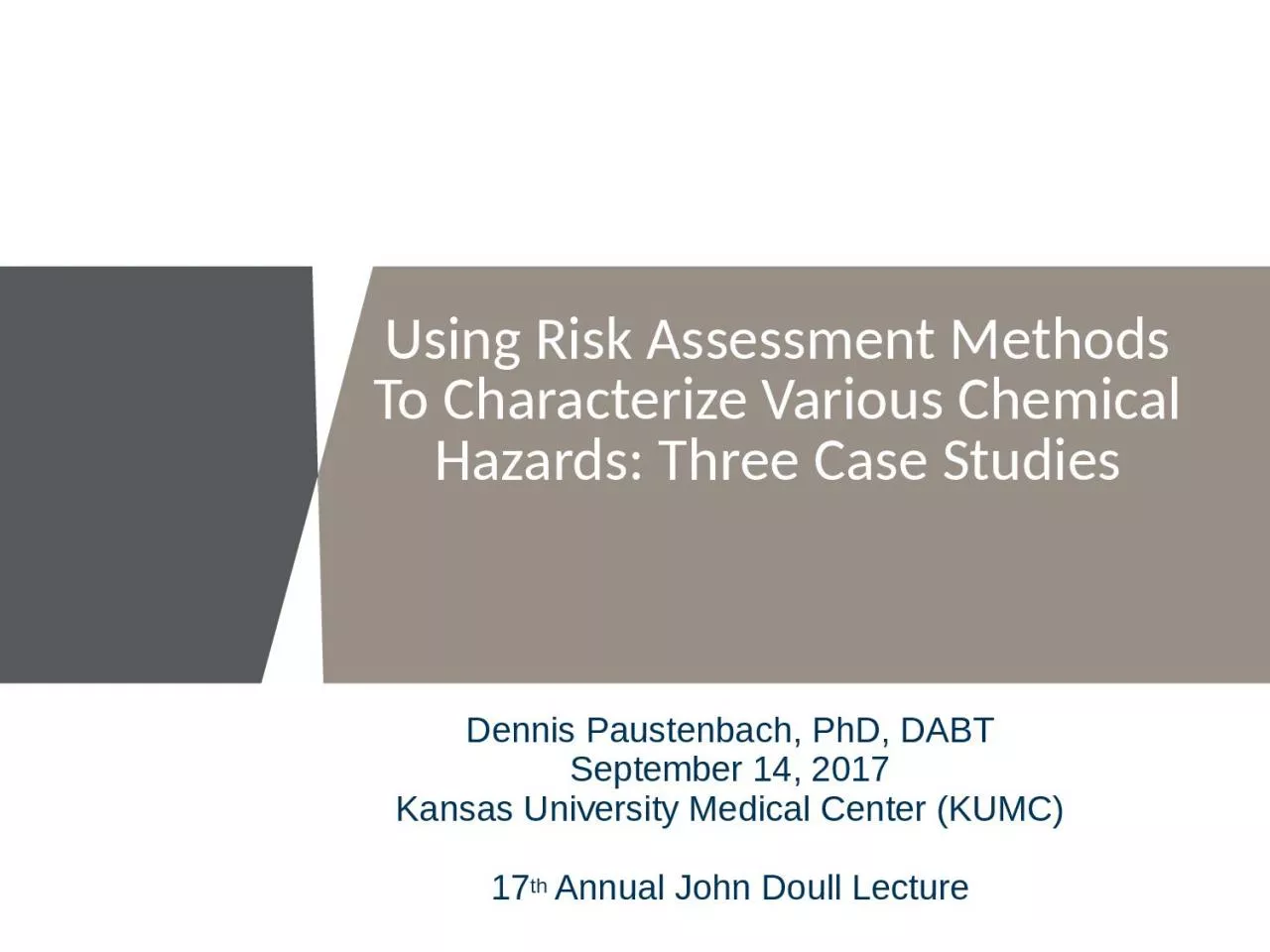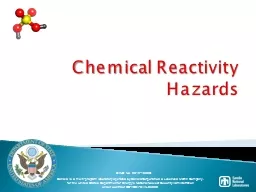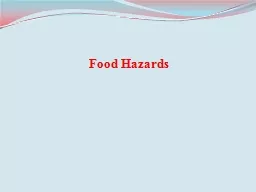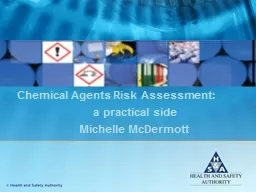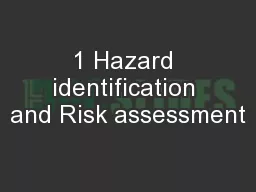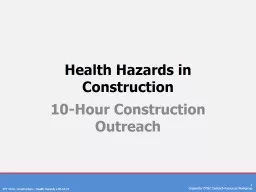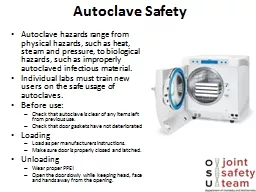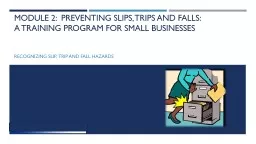PPT-Using Risk Assessment Methods To Characterize Various Chemical Hazards: Three Case Studies
Author : bency | Published Date : 2022-06-11
Dennis Paustenbach PhD DABT September 14 2017 Kansas University Medical Center KUMC 17 th Annual John Doull Lecture Remembering Dr Doull He was a true inspiration
Presentation Embed Code
Download Presentation
Download Presentation The PPT/PDF document "Using Risk Assessment Methods To Charact..." is the property of its rightful owner. Permission is granted to download and print the materials on this website for personal, non-commercial use only, and to display it on your personal computer provided you do not modify the materials and that you retain all copyright notices contained in the materials. By downloading content from our website, you accept the terms of this agreement.
Using Risk Assessment Methods To Characterize Various Chemical Hazards: Three Case Studies: Transcript
Download Rules Of Document
"Using Risk Assessment Methods To Characterize Various Chemical Hazards: Three Case Studies"The content belongs to its owner. You may download and print it for personal use, without modification, and keep all copyright notices. By downloading, you agree to these terms.
Related Documents

